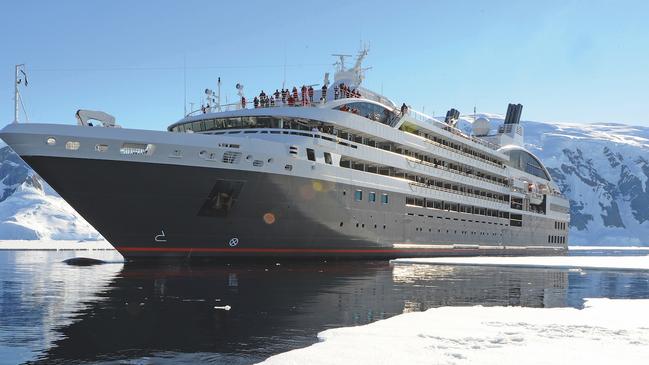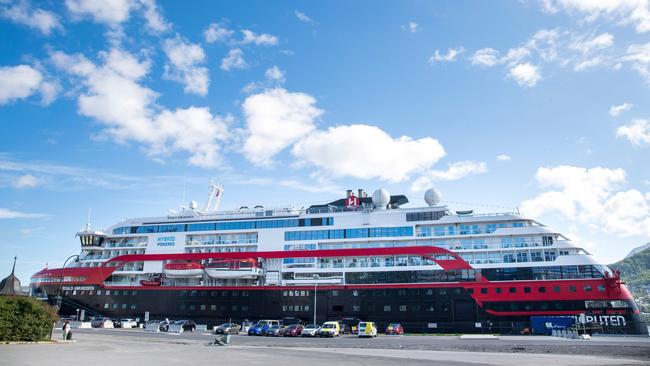Cruise industry tests the waters in Europe
After a dramatic shutdown across the globe in March, cruising is slowly resuming on the continent.

After a dramatic shutdown across the globe in March, cruising is slowly resuming in Europe. A tentative revival started as soon as June, when river cruise lines tested the waters, before a few ocean ships dipped back in, but with mixed results.
The first river vessel to return was Nicko Cruises’ NickoVision, with itineraries along the Rhine and Danube in Germany. Sailing at reduced capacity to enable social distancing — but also because only 40 people booked the 200-passenger ship — it set the trend for single-country cruises for locals only. Among other new procedures were pre-boarding “infection protection” questionnaires (including consent to a SARS-CoV-2 antibodies test), daily temperature checks, no self-service buffet, no access to the pool, spa or gym, and compulsory mask-wearing in corridors and on tour buses.
Amadeus, A-Rosa and CroisiEurope implemented similar procedures in order to sail the same waterways, as well as Portugal’s Douro River and the Seine, Rhone and Loire waterways in France. APT, Scenic and Viking have suspended operations until later this year, according to the latest announcements, but Australian passengers are unlikely to be able to join the journeys until 2021.
Fewer than a dozen small ocean-going ships have returned to the seas, with additional preventative measures to ensure health and hygiene. In most cases, crew are required to undergo a period of isolation and COVID-19 testing, capacity has been halved, passenger numbers limited in public venues, and dining times staggered, with tables spaced far apart. Like river cruises, ocean voyages are open only to residents from specific local countries.
In July, Hapag-Lloyd Cruises commenced domestic departures from Hamburg, welcoming German, Austrian and Swiss travellers. Everyone must complete health checks and pass thermal imaging cameras before boarding and wear masks in shared spaces. Indoor areas and cabins are pumped with fresh air via a filtered air-conditioning system. Between each of the short cruises, a full day is dedicated to deep cleaning and disinfection, with no passengers allowed to embark until the next morning.

Ponant has also enforced strict processes while going back to its French roots to offer voyages from Nice to Corsica, Marseille to Côte d’Azur, Bordeaux to Nouvelle-Aquitane, and along the coast of Brittany. The next two months will see Ponant’s Le Boreal exploring the Arctic, including a new 15-night Russian Arctic cruise, departing September 19; the itinerary gives passengers the opportunity to spot brown bears and seabirds and visit remote Chukchi villages.
But not everything has been smooth sailing for these trailblazers. One month after the restart of Norwegian coastal cruising, a COVID-19 outbreak aboard Hurtigruten’s Roald Amundsen prompted Norway to restrict all ships with more than 100 passengers for the next 14 days. The expedition line’s CEO has since apologised for “deviations” from its internal routines, such as quarantining foreign crew. In the same week, a SeaDream passenger tested positive to the virus upon his return to Denmark, causing guests and crew on the next cruise to be isolated in their cabins and banned from disembarking.
Variety Cruises has had better luck as the first line to return to the eastern Mediterranean. Cruisers report a relatively pleasant experience in Greece, which has one of the lowest COVID-19 infection and mortality rates in Europe — and lower than the present rates in Australia. On the yacht, Galileo, crew wear transparent masks so you can see their smiles, while passengers can choose whether to mask up, but most apparently opt out, feeling comfortable enough in the bubble of the vessel, with regular temperature checks, hand-sanitising, distancing and a maximum of 30 travellers. Departing weekly, Variety Cruises’ seven-night itineraries from Piraeus (Athens) include Santorini, Mykonos, Poros, Paros, Folegandros, Syros and Kythnos.
As for the world’s biggest ships, the wait may soon be over, depending on the outcome for MSC Cruises, which has received approval to get back to business in the Med. The 6300-passenger MSC Grandiosa and 2500-passenger MSC Magnifica are tipped to resume operations this month, capped at 70 per cent occupancy. Grandiosa is expected to offer voyages within Italy, calling at Genoa, Civitavecchia, Naples and Palermo, while Magnifica will visit the Greek ports of Corfu, Katakolon and Piraeus. All guests must undergo COVID-19 testing prior to embarkation and will only be permitted to disembark in ports enroute if they book excursions organised by MSC Cruises.

To join the conversation, please log in. Don't have an account? Register
Join the conversation, you are commenting as Logout